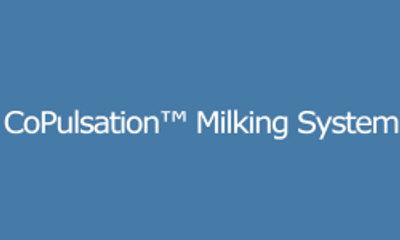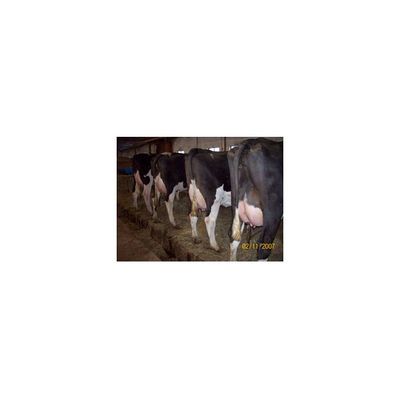


CoPulsation - Conventional Milking Systems
There is no doubt that conventional milking systems cause a number of milking performance and milk quality problems. These problems include liner crawl, incomplete milkout, uneven udders, teat swelling, teat canal scarring (slow milking quarters) and mastitis to name a few. The following is a description of how your conventional milking system causes some of these problems and was authored by Westfalia-Surge as a part of a recent US patent document disclosure in December 2004.
During traditional manual milking, which is a pressure milking method, almost the entire amount of milk present in the udder can be milked. In the machine suctional milking method there is a problem, first of all some quarters are milked too long although no more milk flow is present, and, on the other hand, in individual quarters, the milking process is ended too soon and therefore residual milk remains in the udder. The reason for this is first of all due to the process but also due to anatomical reasons. There is a possibility that when the udder is kinked or rotated due to unfavorable shape of the udder and also due to the fact that the milking tool does not exactly fit the teats, this has a negative influence on the suctional milking process, so that the milk-conducting channel of the teats becomes closed too soon. As a result of this, above all in the end phases of the milking process, namely in the post-milking phase and the milking-out phase, the milk yield is reduced in comparison to manual milking. Also, the quality of the milk milked can be influenced adversely, since, especially in the final phases of the milking, milk components are obtained that have an especially high fat content.
During the milking process, the tissues of the udder between the gland and the teat cisterns draw increasingly together under the action of the milking pressure. Due to the increased vacuum inside the teat rubber of a milk cup and due to the declining milk flow toward the end of the milking process, fluid can accumulate in the area of the Furstenberg venous ring. This accumulation of fluid may lead to the development of edema, as a result of which, usually, permanent closure of the milk-conducting channels in the teats may occur, which can be opened again only after application of a higher tensional force. This effect is further accentuated by the acceleration pressure and flow pressure of the milk column. Generally, this leads to the fact that the milk cup begins to creep up on the teat and the milking out and post-milking phase occur too early, as a result of which the milking process ends sooner than desired.
In order to avoid this effect, it is known that a down-directed force can be applied to the collecting piece of the milking tool, as a result of which the udder tissue will be tensioned and the closure can occur later. After a predetermined period of time, the post-milking process and thus the entire milking process is ended.
In the milking processes known in the art, a problem is that when the "milking-out" is too strong, adverse effects on the condition of the teats may arise. Especially, there is a danger of hyperkeratosis.
The following is DHI data for a conventional herd following proper protocols that achieves a relatively low SCC (around 100,000) but at the high cost of a large cull rate (40% to 50%). This is typical of conventional milking systems that make it impossible to achieve both a low SCC and a low herd turnover!
The total milking system consists of many parts. These include the pulsator, claw, shells, liners, hoses, milk pipes, vacuum supply pipes, vacuum pumps, vacuum regulators, milk meters, automatic retracts and in the case of parlors, a filtered fresh air pipe. There are other components but these are the primary ones.
Although the basic function of the total system is simple, there are some poorly understood features and physics that can significantly impact the performance of the overall system. Some of those will be discussed below. Additional information will be added as the web site evolves.
A milking system milks a cow by applying a vacuum to the teat creating a negative pressure (vacuum) relative to the pressure in the cow’s udder. The resulting pressure difference between the inside of the udder and the tip of the teat causes the milk to flow. A constant pull of vacuum on the teat causes the blood flow in the teat to reduce resulting in congestion, redness and swelling. The purpose of pulsation is to alternate between vacuum and no vacuum so that the teat may rest and the blood can flow from the tissue of the teat.
The problem with a conventional milking system is that it does not provide an effective rest period for the teat. The pulsation causes the liner to partially collapse resulting in the tip of the teat being pinched by the liner producing only a reduced milk phase instead of properly resting the teat. This inadequate liner action is a result of the design of the pulsator. The pulsator has a piston with a seal on each end that is intended to control both the air and vacuum inlets to the pulsator. The problem is with the transition from letting in air to letting in vacuum and back again. During the transition, the piston is allowing both air and vacuum to enter causing a very inefficient pulsation action.
The liner also fails to shut off the pull of the vacuum causing a reduced vacuum level to continue to suck on the teat. This causes the cow to feel pain and the teat to swell and redden within a minute or two. The long term effect is permanent damage to the teat canal in the form of scar tissue.
The formation of scar tissue creates a restriction in the teat canal that partially blocks the flow of milk. This is the reason that cows develop slow milking quarters. The presence of the scar tissue can be readily detected by pinching and rolling the teat between ones forefinger and thumb. The scar tissue will feel like a cord in the center of the teat.
When the machine is first placed on the cow, milk will flow because the scar tissue does not fully block the canal. Within a minute the constant sucking of the vacuum will cause the scar tissue to swell and further block the flow of milk resulting in a partially milked quarter. The teat can be milked by hand at this point because the hand milking process forces the milk down through the canal by squeezing the teat at the top near the udder.
Note: The liner crawls up the teat to the udder choking off milk flow. The liner simply pinches (you can feel this with your finger in the liner) on the end causing pain and irritation. The vacuum is not shut off from the teat end, continuing the sucking action that causes the milk to continue to flow and creating scar tissue in the teat canal. Each of these problems are known to exist in the industry and are detailed on the page Known Problems.
The constant sucking on the teat end during the “rest” phase of a conventional system can also be noted by the fact that the milk flow never stops during this “rest” phase. The milk flow will only slow down. The flow of milk can be observed through the clear openings of the claw or the base of clear shells. Simply watch the milk entering the claw from one of the liners. You will note the stream of milk during the rest phase only reduces during the rest phase and never stops. Every other brand of milking systems has this flaw.
Watch your milking system and you will see that the milk flow never stops during the rest phase, it only slows down as it continues to suck on the teat canal destroying the lining and causing liner crawl. The manufacturers of your conventional milking system have admitted to these known problems. See the documented evidence at Known Problems.
The teats will often look red and partially swollen when the machine is removed. The liner will also crawl up the teat to the udder. The constant sucking action causes the liner crawl. A liner that has crawled up to the udder will begin to choke the flow of milk from the udder to the teat and also cause an incomplete milk out.
Normal teat: the photo (pictured to the right) from Cornell University is a normal teat, per their standards, following machine removal.
Photo from Ynte Schukken, Director of QMPS, Cornell University. Documented as a “normal teat after milking” in the Got Quality Milk? article of the Nov. 2000 issue of Northeast Dairy Business.
Although red, swollen teats following removal of conventional milking machines is considered normal, it should never be considered as acceptable. The industry has accepted this condition along with slow milking quarters and uneven udders for too many years. The CoPulsation™ Milking System stops the sucking of the teat by providing a true massaging rest phase.
Milking systems have evolved over the years with the introduction of new technology and automation. This has provided the dairy farmer with improvements in productivity by reducing the labor involved in the milking process. Unfortunately there are some basic functional problems with the milking equipment that causes poor milking performance and reduced milk quality.
Evidence of this exists in U.S. patent documents that provide the details of why conventional milking systems in use today do not work well. These documents explain why cows do not milk out well, why their teats are irritated and what causes liner crawl and incomplete milk out.
See videos at Facebook.com/CoPulsation to understand why CoPulsation is the only humane way to milk an animal with a machine.
